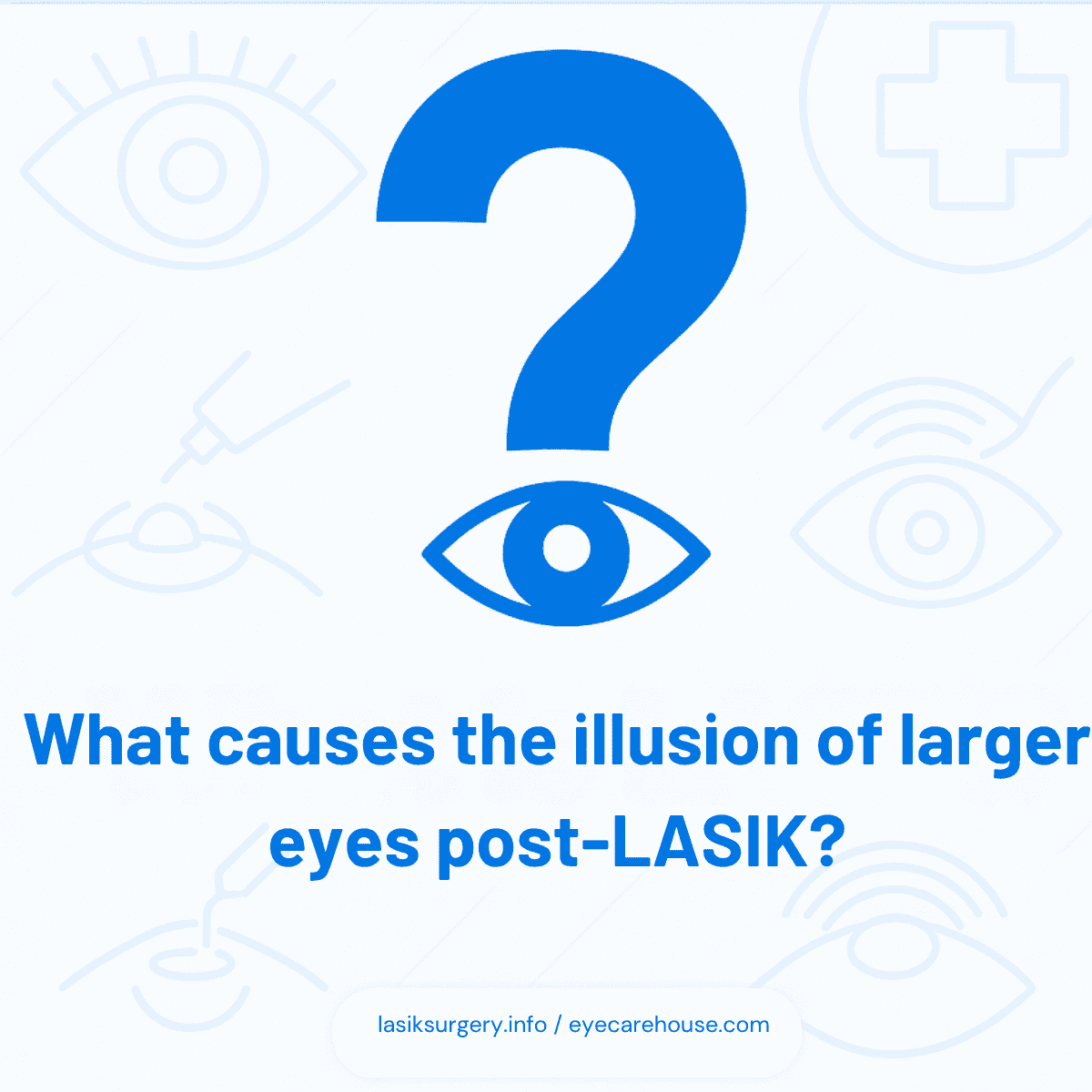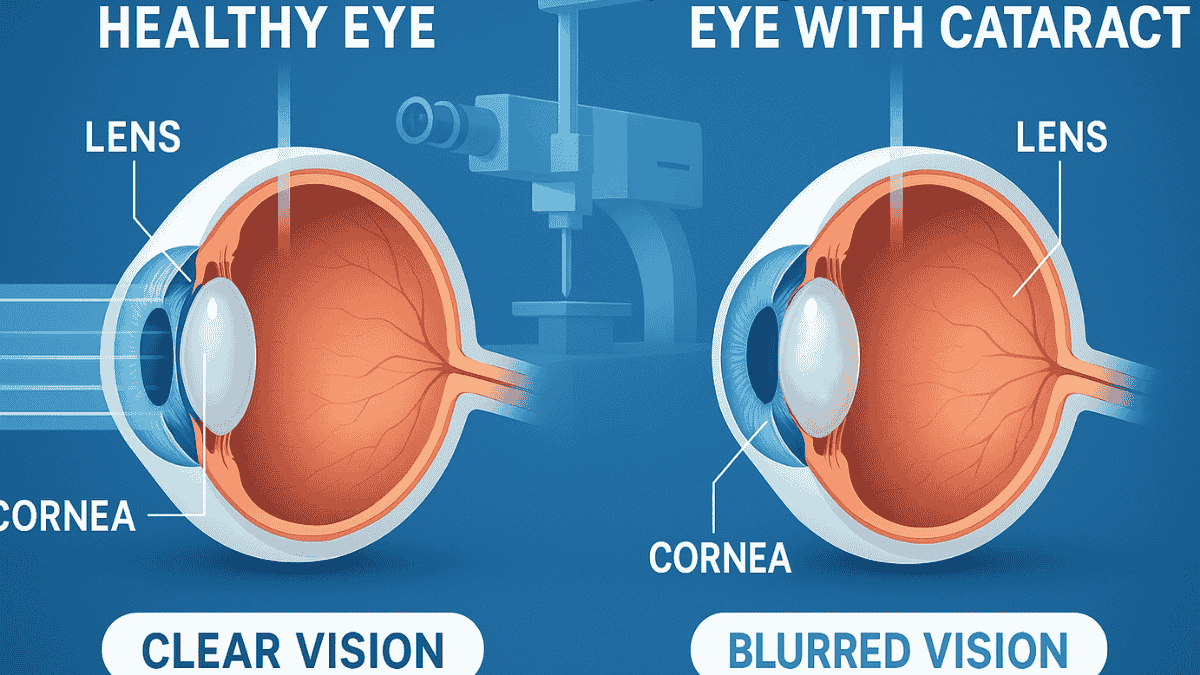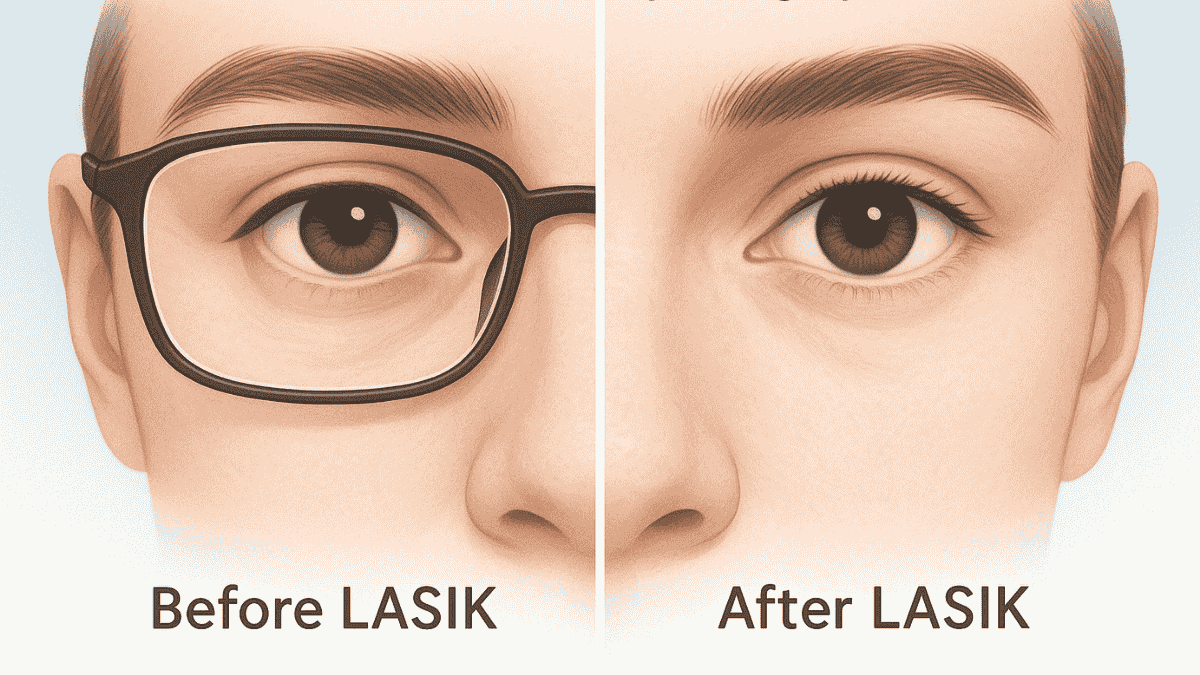
Does LASIK Make Your Eyes Bigger?
Does LASIK Make Your Eyes Bigger? LASIK eye surgery is a popular choice for individuals looking to reduce their dependence on glasses or contact lenses. A frequent question prospective patients ask is whether LASIK eye surgery makes your eyes appear bigger. Let’s explore this common query and clarify what laser eye surgery actually involves and how it might influence your eye’s appearance.
Table of Contents
The Optical Illusion: Why Eyes Might Appear Larger After LASIK
Many individuals believe their eyes look larger following LASIK, but this is generally an optical effect rather than a physical change in eye size. The perceived difference in appearance is mostly due to a few factors that create this illusion. Understanding these can help set realistic expectations for your laser vision correction journey.
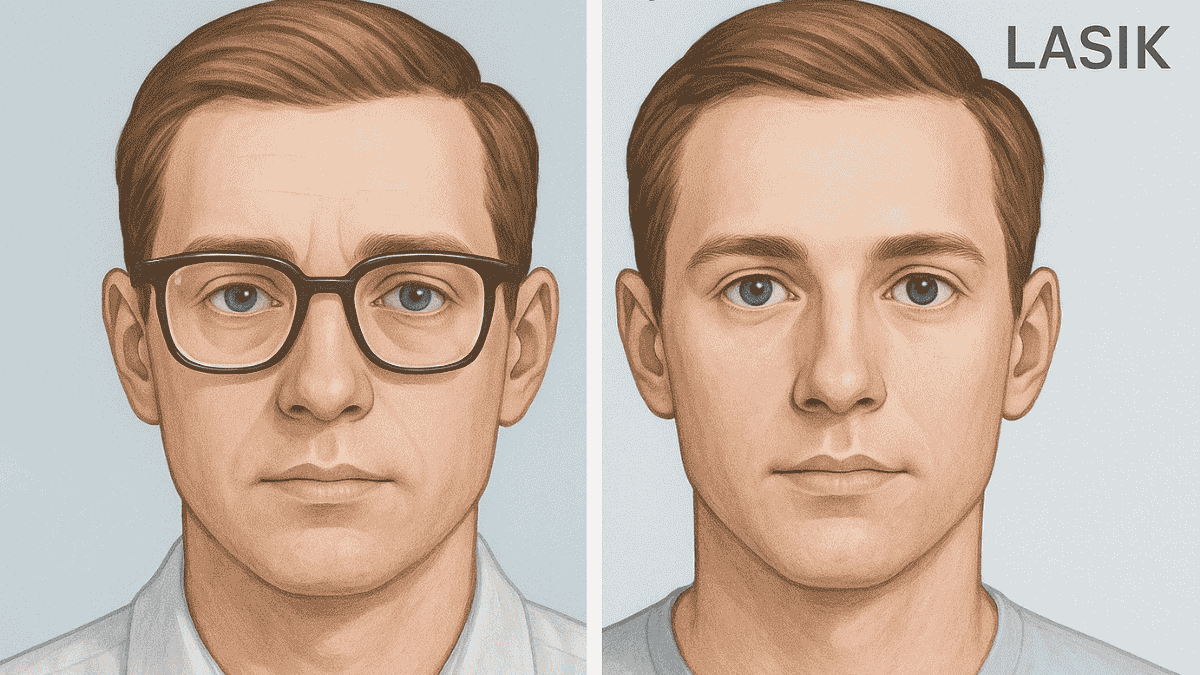
Related Article
LASIK Eye Surgery: What You Need to KnowNo More Glasses Shrinking or Magnifying Your Eyes
If you previously wore glasses, especially strong prescriptions, your lenses likely altered the perceived size of your eyes. Lenses for nearsightedness (myopia) are thicker at the edges and thinner in the center, which can make your eyes appear smaller to others. Conversely, lenses for farsightedness (hyperopia) are thicker in the center and can make your eyes appear magnified.
Once you undergo LASIK and no longer need these corrective lenses, your eyes are seen in their natural size. For former nearsighted individuals, this means their eyes might seem larger without the minifying effect of their old glasses. For those who were farsighted, their eyes might appear their true size, potentially smaller than when viewed through magnifying lenses, though the “bigger eye” perception is more common in the general discussion.
Increased Eye Visibility
Eyeglass frames, regardless of style, create a physical barrier around your eyes. Thick lenses, particularly for high prescriptions, can also obscure parts of your eyes or the surrounding area. When you stop wearing glasses after successful LASIK laser eye surgery, more of your eyes and the skin around them become visible.
This unobstructed view can contribute significantly to the impression that your eyes are larger or more prominent. The lack of frames allows your eyes to be a more central feature of your face. This effect is purely about visibility, not an actual change in the anatomical size of your eyes through the refractive surgery.
Change in Focus and Attention
When you are not wearing glasses, people tend to focus more directly on your eyes during conversation. Without the visual interruption of frames or reflections on lenses, your eyes become a more direct point of engagement. This increased attention can lead to a subjective feeling that your eyes are more noticeable or appear larger.
Friends and family who are used to seeing you with glasses might be particularly struck by the change. Their comments can reinforce the perception that your eyes have somehow increased in size. However, this is more about how others are now perceiving your unaltered features.
What LASIK Actually Does to Your Eyes
To understand why LASIK, or laser in situ keratomileusis, does not physically enlarge your eyes, it’s helpful to know what the laser surgery accomplishes. The procedure is remarkably precise, focusing on a specific part of your eye to correct vision problems. The fundamental structure and size of your eyeball remain untouched.
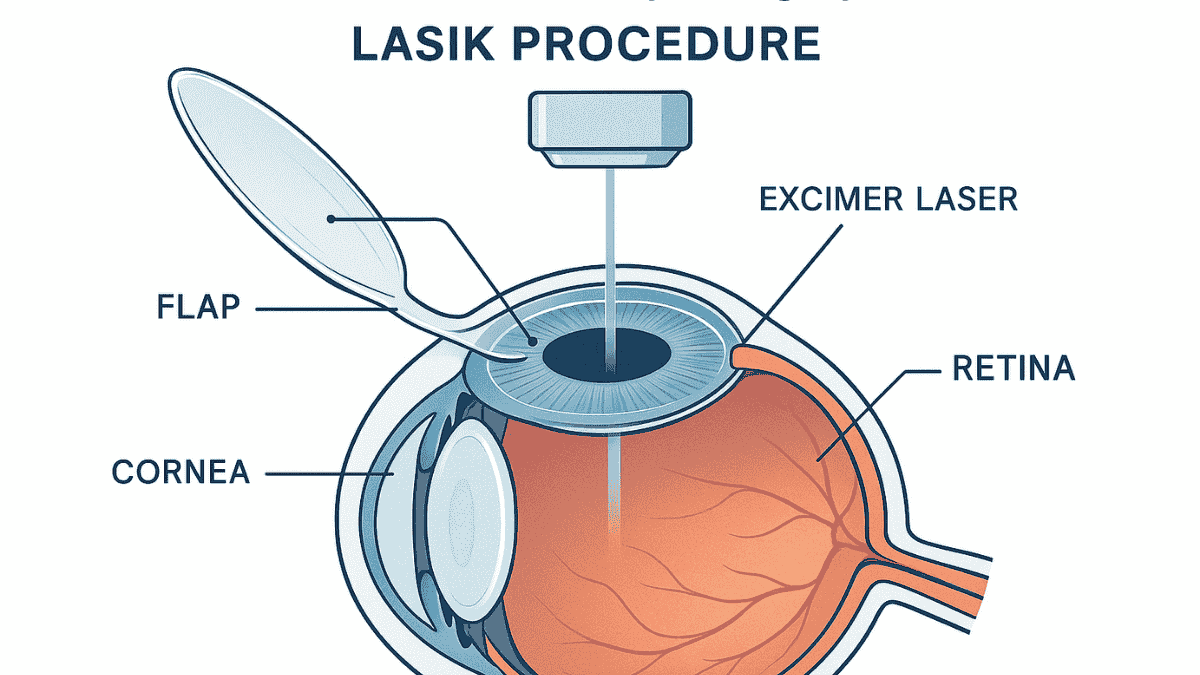
Corneal Reshaping
LASIK eye surgery primarily involves reshaping your cornea, which is the transparent front surface of your eye. The cornea acts like the eye’s outermost lens, bending light that enters your eye to help you see clearly. If your cornea’s shape is irregular, light doesn’t focus correctly on the retina, leading to blurry vision.
During LASIK, an eye doctor uses a specialized laser, often an excimer laser, to remove a microscopic amount of corneal tissue. This process changes the cornea’s curvature, allowing light to focus properly on the retina. The surgery does not alter the overall size of your eyeball, nor does it affect your eyelids or the surrounding orbital structures.
Vision Correction
The ultimate aim of LASIK is to improve your visual acuity, reducing or eliminating the need for wearing glasses or contact lenses. This vision correction is achieved by modifying how light rays are refracted (bent) as they pass through your cornea. Whether you have nearsightedness, farsightedness, or astigmatism, LASIK seeks to rectify these refractive errors.
This correction happens internally, specifically at the corneal level. It does not involve any techniques that would lead to a physical enlargement of your eye. Other eye conditions, like cataracts, require different procedures such as cataract surgery, which involves replacing the eye’s natural lens.
No Physical Enlargement
It is crucial to understand that LASIK surgery does not involve any procedural step that would physically make your eyes bigger. The dimensions of your eyeball, determined by genetics and development, remain constant after the laser eye procedure. Any perceived increase in size is purely illusory or related to secondary factors.
The eye doctor focuses on the optical properties of the eye, not its physical dimensions beyond what is necessary for the refractive laser application. Understanding this helps manage expectations about the aesthetic outcomes of LASIK.
Understanding Vision Problems LASIK Can Address
LASIK is effective for a range of common vision problems, which are primarily refractive errors. These occur when the shape of your eye prevents light from focusing directly on the retina. Knowing what LASIK treatable conditions are can help you understand its scope.
Nearsightedness (myopia) makes distant objects appear blurry, while close objects are clear. Farsightedness (hyperopia) causes nearby objects to be out of focus, and sometimes distant objects too. Astigmatism results in generally blurry or distorted vision due to an irregularly shaped cornea or lens.
LASIK aims to correct these by precisely altering the corneal surface. While highly effective for many, it’s not a universal solution for all eye disease or vision issues. A comprehensive eye exam is vital to determine candidacy.
The LASIK Procedure Itself: A Quick Look
A brief understanding of the LASIK procedure can further clarify why it doesn’t change eye size. First, your eye doctor will administer numbing eye drops. Then, a thin corneal flap is created on the surface of the eye.
This flap is gently lifted, and an excimer laser, guided by sophisticated computer mapping of your eye, removes microscopic corneal tissue. This reshapes the cornea. The flap is then repositioned, where it naturally adheres back into place without stitches.
The entire process is quick, typically lasting only a few minutes per eye. The focus is solely on the cornea’s curvature for vision correction, not on altering the eye’s overall volume or external appearance beyond removing the need for glasses.
Related Article
What to Expect on the Before and After LASIK Eye SurgeryThe Science Behind Eye Appearance After LASIK
While LASIK doesn’t physically alter eye size, some subtle physiological changes or their absence can influence how your eyes look. These are often minor but can contribute to the overall perceived change in appearance post-surgery. Understanding these factors can provide a clearer picture of what to expect.
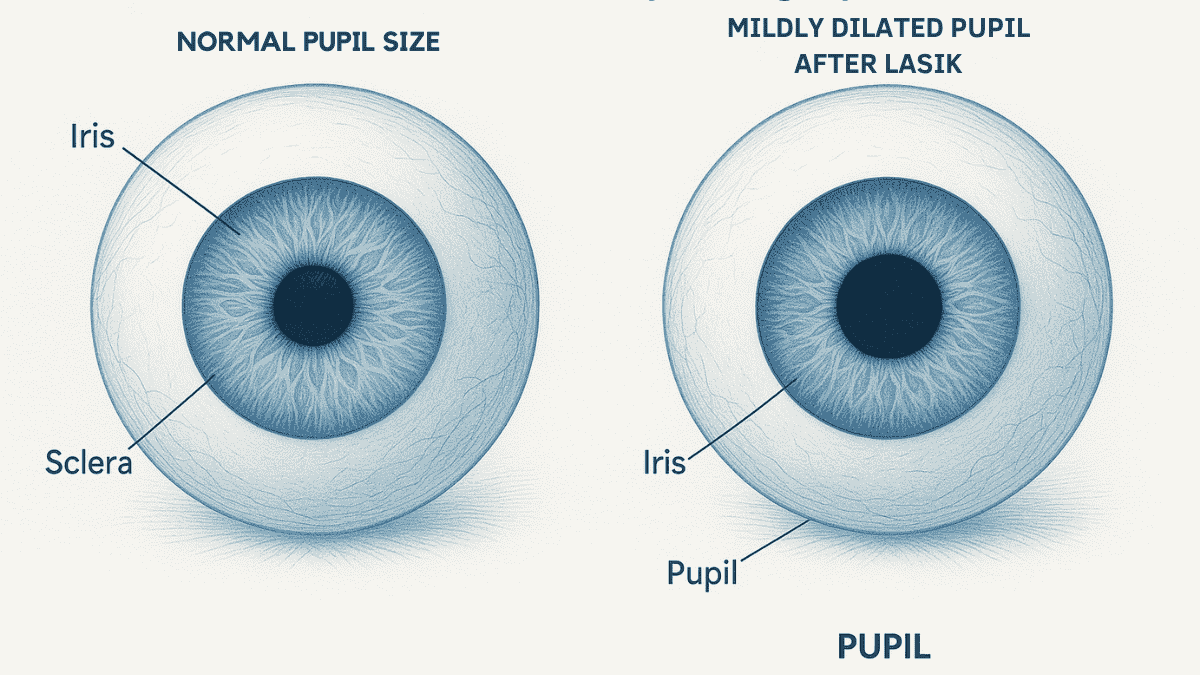
Pupil Dilation
Some individuals might experience a slight, often temporary, increase in their pupil size after LASIK eye surgery. The pupil is the black center of your eye that expands or constricts to control the amount of light entering. If pupils are slightly more dilated, the colored part of your eye, the iris, might appear smaller, making the dark pupil area seem larger, which could be misinterpreted as a larger eye overall by some.
Persistent, significant pupil dilation is uncommon but can be a side effect for some, potentially affecting night vision. Your eye doctor will assess your pupil size during your pre-operative eye exam. This is an important consideration, especially for those concerned about night vision quality or halos around lights.
Improved Eye Symmetry
In some cases, if there was a noticeable difference in the prescription between the two eyes (anisometropia), correcting this with LASIK can lead to more balanced eye use. When both eyes work together more effectively, it can sometimes subtly improve perceived facial symmetry. While not making the eyes themselves larger, this enhanced balance can make the eyes appear more harmonious and aesthetically pleasing.
This effect is often subtle and may not be noticed by everyone. However, for individuals who were bothered by previous asymmetry in vision or even the appearance caused by very different lens thicknesses in their glasses, this can be a welcome change. The goal is improved vision, but aesthetic harmony can be a pleasant side effect.
Better Eye Health and Comfort
For many people who switch from long-term contact lens wear to LASIK, there’s often an improvement in overall eye health and comfort. Constant contact lens use can sometimes lead to issues like redness, irritation, or dry eye symptoms for some wearers. Discontinuing contact lenses can alleviate these problems.
Related Article
Managing Dry Eye Syndrome: Causes and TreatmentsHealthier eyes that are less red and irritated naturally look brighter, clearer, and more vibrant. This improved appearance, free from the signs of contact lens-induced stress, might contribute to the perception that the eyes are more open or prominent, though not physically larger. Reduced rubbing and touching of the eyes also helps maintain their health.
Psychological Factors: Perception vs. Reality
Our perception of our own appearance is complex and influenced by more than just physical reality. Psychological factors play a significant role in how we feel about ourselves after a change like LASIK. These internal shifts can be just as impactful as any external observations.

Increased Confidence
Many people report a significant boost in self-confidence after undergoing LASIK and achieving freedom from glasses or contact lenses. This newfound confidence can alter how you perceive yourself, including your facial features. When you feel better about yourself, you often view your reflection more positively.
This enhanced self-esteem can lead you to feel that your eyes look better, brighter, or even larger. It’s a powerful example of how our internal state can color our external perceptions. The liberation from corrective eyewear is often a major life improvement, translating into a more positive self-image.
Focus on Eyes
After undergoing a procedure like LASIK laser eye surgery, it’s natural to pay more attention to your eyes and vision. You might spend more time looking at your eyes in the mirror, observing the changes, and appreciating your new, clearer sight. This heightened awareness and focus can make your eyes seem more prominent to yourself.
This self-observation isn’t necessarily about actual physical changes but rather an increased appreciation for a part of your body that has undergone a positive transformation. The simple act of focusing more on your eyes can make them feel more significant in your overall appearance.
Positive Associations
The sheer joy and relief of experiencing clear vision without the daily hassle of glasses or contact lenses can create strong positive associations with your eyes. You might start to see your eyes in a new, more favorable light because they are now sources of effortless, clear sight. This positive emotional connection can enhance their perceived aesthetic appeal.
This psychological uplift means you might associate your “new” eyes with freedom and improved quality of life. Such positive feelings can easily translate into perceiving your eyes as more attractive or striking, even if their physical dimensions remain unchanged.
What Others Notice After Your LASIK Surgery
While you might be introspectively analyzing whether your eyes appear larger, people around you will notice other, more straightforward changes. Their observations are often focused on the overall impact of you no longer wearing glasses or contact lenses. These external perceptions contribute to the narrative around your post-LASIK look.
Absence of Glasses
The most immediate and obvious change for others will be the absence of your glasses. If you’ve worn glasses for a long time, your face without them can look quite different to friends, family, and colleagues. This alteration in your familiar appearance is often the primary thing people comment on.
This can make your entire face appear more open and your features more visible. Your eyes, now unobstructed, naturally become a more focal point of your face. This shift in facial dynamics is significant and often perceived positively.
More Direct Eye Contact
Without the physical barrier of eyeglasses, or the occasional discomfort of contact lenses, individuals often find themselves making more direct and sustained eye contact. Improved vision itself can also lead to more confident social interactions. This increased eye contact can make your eyes seem more engaging and expressive to others.
When someone looks you directly in the eyes more often and more comfortably, it can create an impression of greater openness or even prominence of the eyes. This is a behavioral change that influences perception. You might find that people respond to you differently when your eyes are more visible and engaging.
Facial Balance and Features
Removing glasses can alter the perceived balance of your facial features. Glasses, depending on their style and thickness, can sometimes dominate or divide the face. Without them, your natural facial harmony might be more apparent, drawing positive attention to your eyes as part of a more cohesively viewed face.
This can lead to comments that you look different, refreshed, or even younger. While these compliments are welcome, they usually stem from the overall change in your facial presentation rather than a specific enlargement of your eyes. Your eyes simply reclaim their natural place in your facial aesthetics.
LASIK and Facial Aesthetics
While LASIK’s primary purpose is vision correction, it can certainly have indirect positive effects on your overall facial aesthetics. These benefits arise from no longer needing external vision aids. This can be a significant factor for many considering the procedure.
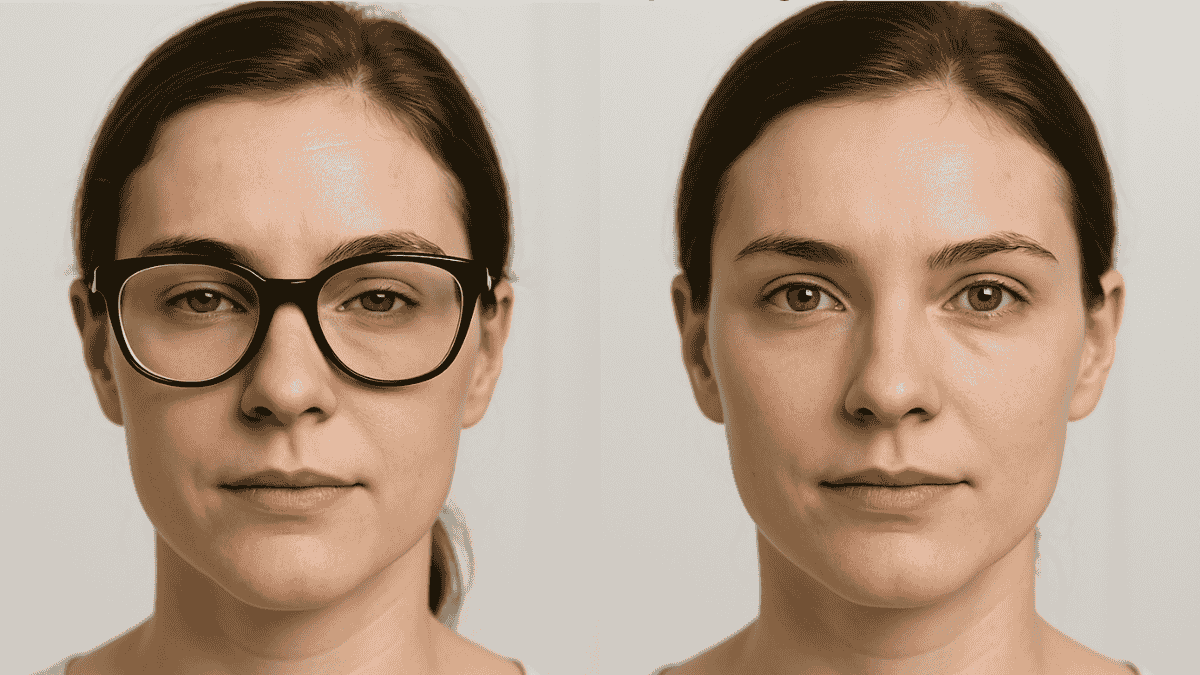
Related Article
Is Laser Eye Surgery Worth It? Exploring the BenefitsMore Natural Look
Without glasses, your face often presents a more natural and unobstructed appearance. Your inherent facial features, including the shape and expression of your eyes, can be seen without interference. This can lead to a feeling that your appearance is more genuinely “you.”
Many people appreciate this return to a more natural look, feeling that glasses sometimes masked their true expressions or features. LASIK allows your eyes to be fully expressive. This change contributes to an overall aesthetic improvement that many patients enjoy.
Makeup Application
For those who wear eye makeup, LASIK can offer a newfound ease and enjoyment in its application. Applying makeup without having to work around glasses, or worrying about contact lens irritation, can be liberating. You might find it easier to experiment with different makeup styles that enhance your eyes.
Clear vision also means you can see what you’re doing more accurately when applying intricate eye makeup. This improved ability to enhance your eyes cosmetically can certainly make them appear more striking or defined, contributing to their overall aesthetic appeal, although not to their physical size.
Wider Range of Eyewear Choices
After LASIK, your choice of eyewear expands significantly, particularly concerning non-prescription sunglasses. You are no longer limited by the need to fit prescription lenses into sunglass frames or wear cumbersome clip-ons or fit-overs. This freedom allows you to select from a vast array of fashion sunglasses that can complement your style and accentuate your eyes.
Wearing stylish sunglasses can draw positive attention to the eye area. This ability to accessorize freely is a small but enjoyable perk for many LASIK patients. You can also more easily wear protective eyewear for activities like contact sports.
Beyond LASIK: Other Vision Correction Options
While LASIK is a well-known refractive surgery, it’s not the only option for vision correction. Other procedures like photorefractive keratectomy (PRK), small incision lenticule extraction (SMILE), implantable collamer lenses (EVO ICL), and refractive lens exchange (RLE) cater to different needs and eye conditions. None of these procedures are designed to make your eyes physically larger.
PRK also reshapes the cornea but doesn’t involve creating a corneal flap, making it suitable for those with thinner corneas. SMILE is a less invasive laser procedure that involves creating and removing a small piece of corneal tissue (a lenticule) through a small incision. EVO ICL involves implanting a biocompatible lens in front of your natural lens, offering an alternative for those with high prescriptions or dry eye concerns.
Refractive lens exchange is similar to cataract surgery; it replaces your natural lens with an artificial one, often chosen by older adults or those with early cataracts. Each treatment option has specific indications, benefits, and potential risks. Your eye doctor can determine the most suitable refractive laser eye surgery or other vision correction method for your individual medical history and eye health.
Potential Side Effects and Eye Appearance
Like any surgical procedure, LASIK has potential side effects, though most are temporary and mild. Some of these can temporarily affect how your eyes look or feel. For example, experiencing dry eyes is common after LASIK, particularly in the initial months.
Dry eye disease can cause symptoms like irritation, redness, and a gritty sensation. While these don’t make your eyes bigger, red or bloodshot eyes can certainly alter their appearance, making them look tired or strained. Fortunately, dry eye symptoms are usually manageable with lubricating eye drops and tend to improve over time.
Other temporary effects immediately after surgery might include light sensitivity or seeing halos around lights, which can impact your night vision. These issues typically resolve as your eyes heal. It’s important to discuss potential side effects with your eye doctor before undergoing LASIK.
Related Article
Blurry Vision After LASIK: Causes and What to ExpectCommon Misconceptions About LASIK and Eye Appearance
Several misconceptions circulate regarding LASIK and its effect on eye appearance, beyond just the size question. It’s important to dispel these myths to have a clear understanding of what the procedure does and does not do. Accurate information helps in making an informed decision.
Myth: LASIK Changes Eye Color
A common misconception is that LASIK surgery can alter your eye color. This is entirely false. LASIK surgery works on the cornea, which is the clear outer layer of your eye. Eye color is determined by the iris, the colored part of your eye, which is located behind the cornea and is not affected by the LASIK laser.
Your iris contains melanin, the pigment responsible for eye color. The amount and distribution of this pigment are genetically determined and do not change as a result of laser eye surgery. So, if you have blue eyes, they will remain blue after LASIK.
Myth: LASIK Affects Eyelid Shape or Position
Another myth is that LASIK can change the shape or position of your eyelids. The LASIK procedure is confined to the cornea and does not involve any surgical alteration of the eyelids or surrounding skin. Your eyelid anatomy remains completely unchanged by the laser vision correction itself.
Sometimes, people might notice their eyelids more if they previously wore glasses that hid them. However, this is a matter of perception, not a physical change caused by the surgery. Any concerns about eyelid appearance unrelated to LASIK should be discussed separately with a specialist if desired.
Myth: LASIK Results in Bulging Eyes
Some people worry that LASIK might cause their eyes to bulge or protrude, a condition known as proptosis. LASIK does not affect the position of the eyeball within the eye socket, nor does it increase intraocular pressure in a way that would cause bulging. The surgery’s focus is precise and limited to the corneal surface for refractive correction.
Conditions that cause bulging eyes, such as thyroid eye disease, are unrelated to LASIK. If you have concerns about changes in eye prominence, it’s best to consult your eye doctor to rule out other underlying medical conditions. LASIK itself is not a cause of such changes.
The Importance of a Comprehensive Eye Exam and Consultation
Before undergoing LASIK or any refractive surgery, a comprehensive eye exam and thorough consultation with an experienced eye doctor are crucial. This evaluation determines your suitability for the procedure and allows you to discuss your expectations, including any aesthetic concerns. An informed decision is vital for a satisfactory outcome.
During the consultation, your eye doctor will review your medical history, assess your overall eye health, measure your prescription, check your pupil size, and evaluate corneal thickness and shape. They will explain the benefits and risks of laser surgery, discuss alternative treatment options if LASIK isn’t ideal for you, and answer all your questions. This is the time to address any hopes or worries about how your eyes might look afterward.
Open communication with your eye care professional ensures realistic expectations. They can clarify that while LASIK doesn’t make eyes bigger, the freedom from glasses often leads to a perceived positive change in appearance. Understanding all aspects, from visual acuity improvements to potential side effects like temporary dry eye disease, helps you prepare for the day LASIK transforms your vision.
Related Article
What to Expect During a LASIK ConsultationReal Patient Experiences: Does LASIK Make Your Eyes Look Bigger?
Hearing from individuals who have undergone LASIK provides valuable perspectives. While experiences vary, a common theme is the perceived, rather than actual, change in eye appearance. These accounts often highlight the subjective nature of aesthetic changes.
Sarah, 32, shared, “I don’t think my eyes actually got bigger, but they definitely look more open and bright without my thick glasses. My friends say I look more like ‘me’ now, and I feel more confident without constantly pushing my specs up my nose.” This reflects the impact of removing the minifying effect of her previous corrective lenses.
Mike, 45, commented, “People keep telling me my eyes look bigger, but I think it’s just because they can see them better now that I’m not wearing contact lenses all the time. My eyes used to get red from contacts, so maybe they just look healthier and clearer.” His experience points towards improved eye health enhancing appearance.
Lisa, 28, noted, “My eyes don’t look bigger to me in terms of size, but I feel like they stand out more. Maybe it’s because I’m not hiding behind glasses anymore, or perhaps it’s just the boost in my overall confidence since the laser eye surgery.” This highlights the psychological component and increased visibility.
James, 39, who had a high astigmatism prescription, mentioned, “For years, my glasses were essential. After my lasik laser eye surgery, the biggest thing wasn’t eye size, but that people noticed my expressions more. It was like a barrier was removed, allowing for better connection.” This emphasizes the social interaction aspect.
Finally, Chloe, 25, who was an avid swimmer, said, “I always hated dealing with contact lenses or prescription goggles. Post-LASIK, not only is swimming a breeze, but my friends say I look more awake and alert. It’s probably because I’m not squinting or dealing with irritated eyes.” Her experience touches upon improved comfort influencing expression.
Conclusion
So, does LASIK make your eyes bigger? The direct answer is no. LASIK eye surgery does not physically enlarge your eyes or alter their anatomical shape or size. The procedure focuses on reshaping the cornea to improve vision, effectively addressing issues like nearsightedness, farsightedness, and astigmatism.
However, the widespread perception that eyes appear larger post-LASIK stems from several factors. The absence of glasses, which can minify or hide parts of the eyes, allows more of your eyes to be visible. This, combined with increased direct eye contact and a potential boost in self-confidence, can create a powerful illusion of larger or more prominent eyes.
The most significant and life-changing outcome of LASIK is the improvement in visual acuity and freedom from corrective lenses. Any perceived changes in eye appearance are generally subtle, subjective, and more related to optical effects and psychological responses than to any physical alteration by the laser surgery. If you are considering LASIK, focusing on the primary benefit of clearer vision will help you make an informed decision about this popular treatment option.
No, LASIK does not physically enlarge your eyes. It reshapes the cornea to improve vision, but the anatomical size of the eyeball remains unchanged.
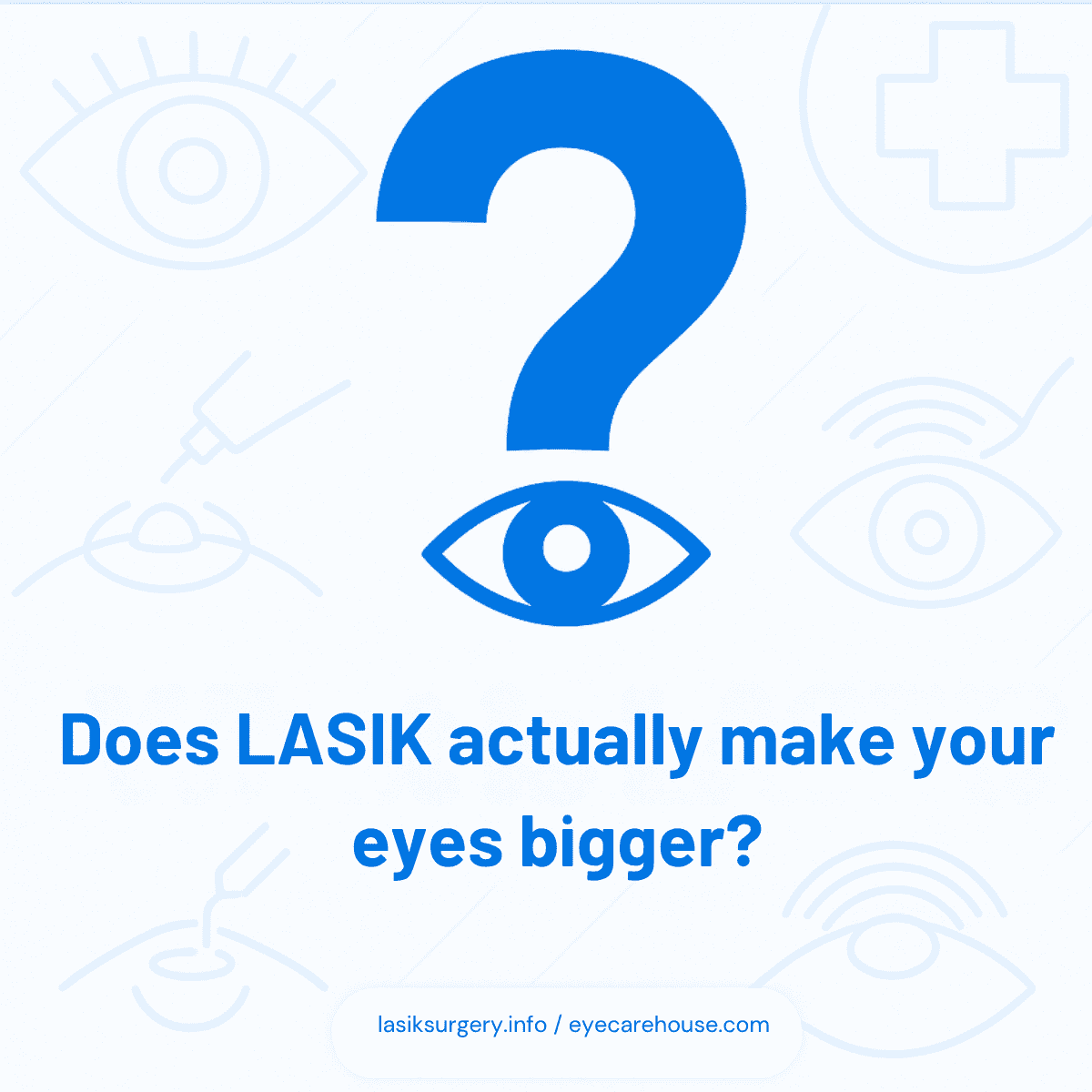
After LASIK, the removal of glasses enhances eye visibility. Without lens distortion or frames, your natural eyes become more prominent.
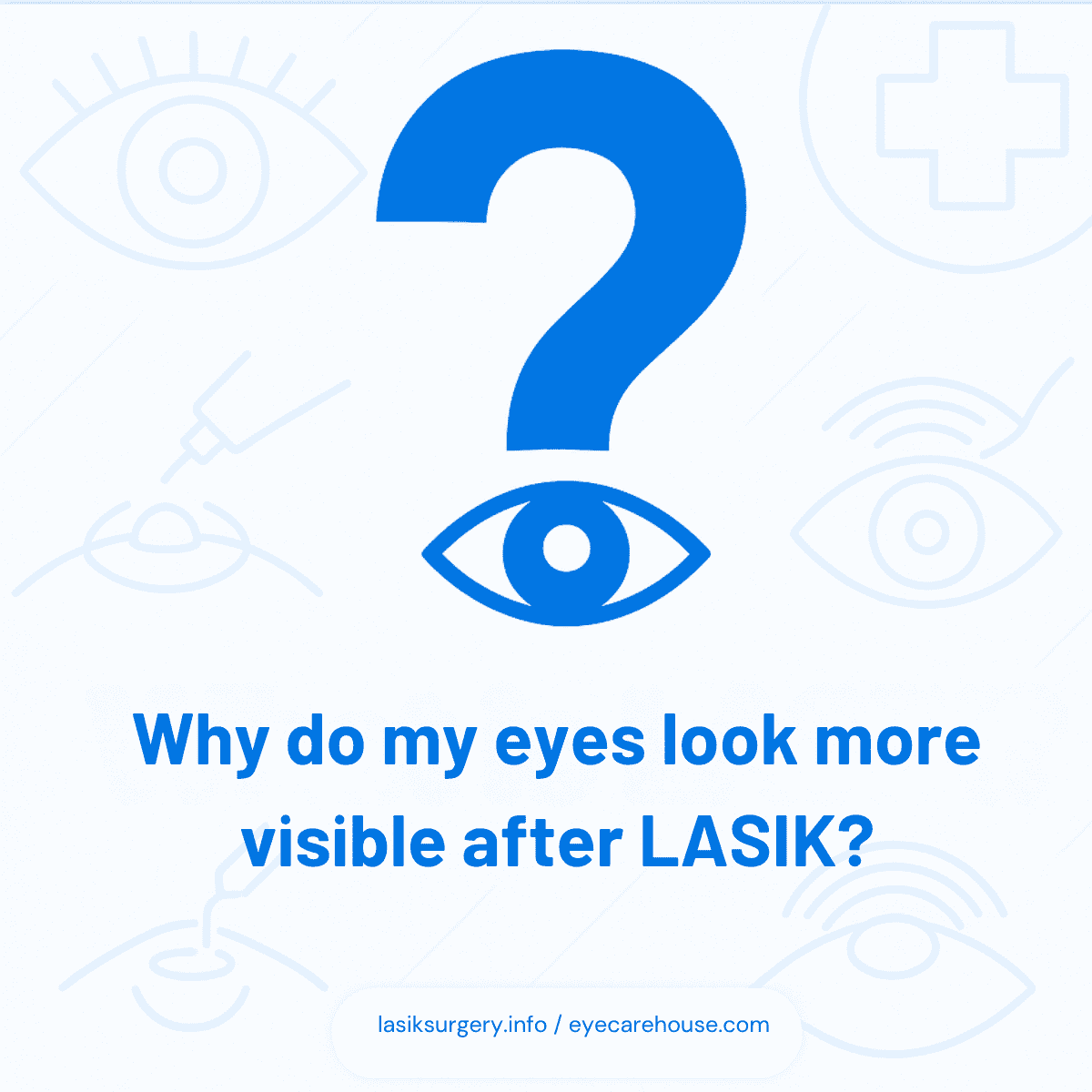
Yes, people may perceive your eyes as larger or more expressive due to improved direct eye contact and facial openness after LASIK.
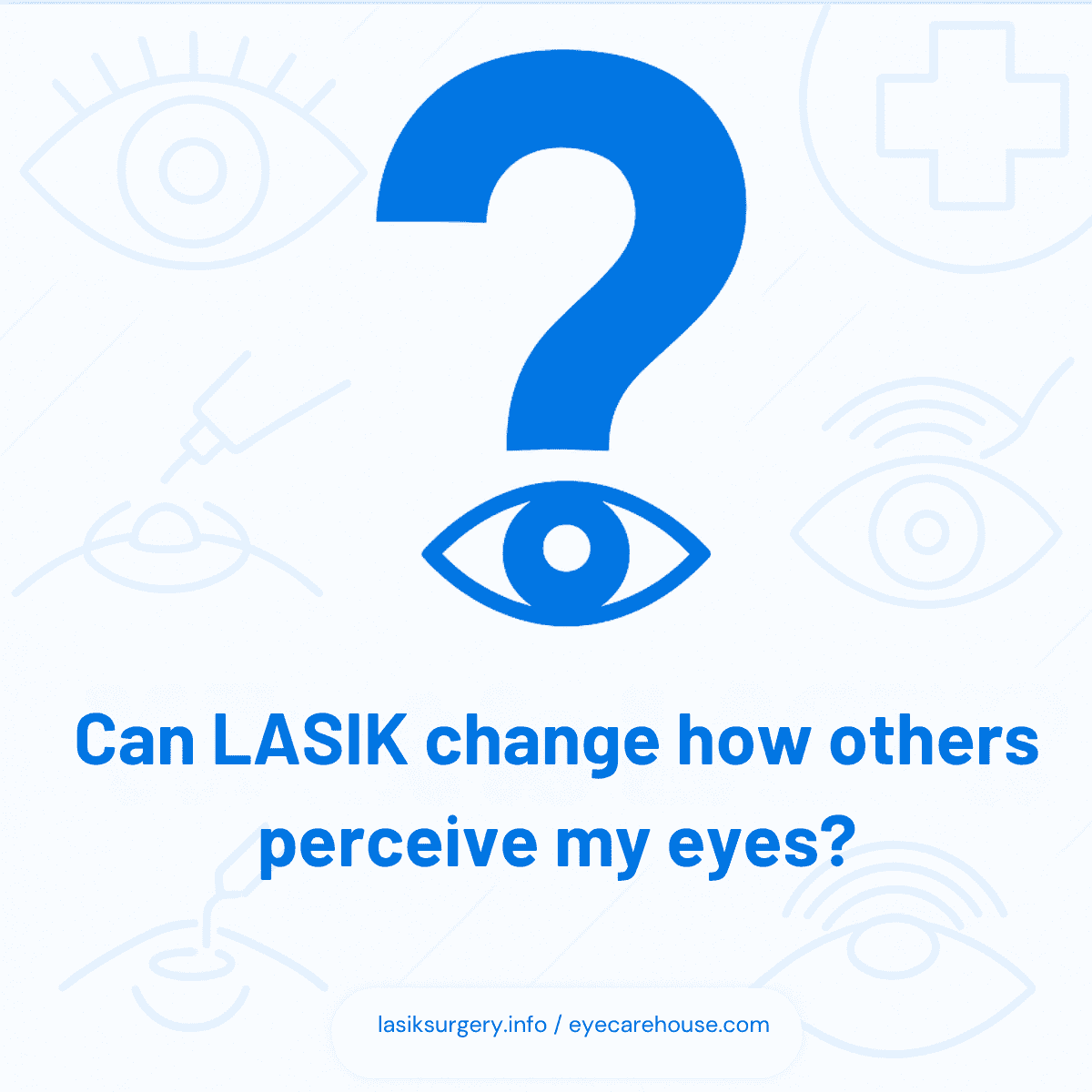
Glasses for nearsightedness tend to make eyes appear smaller, while glasses for farsightedness can magnify them.
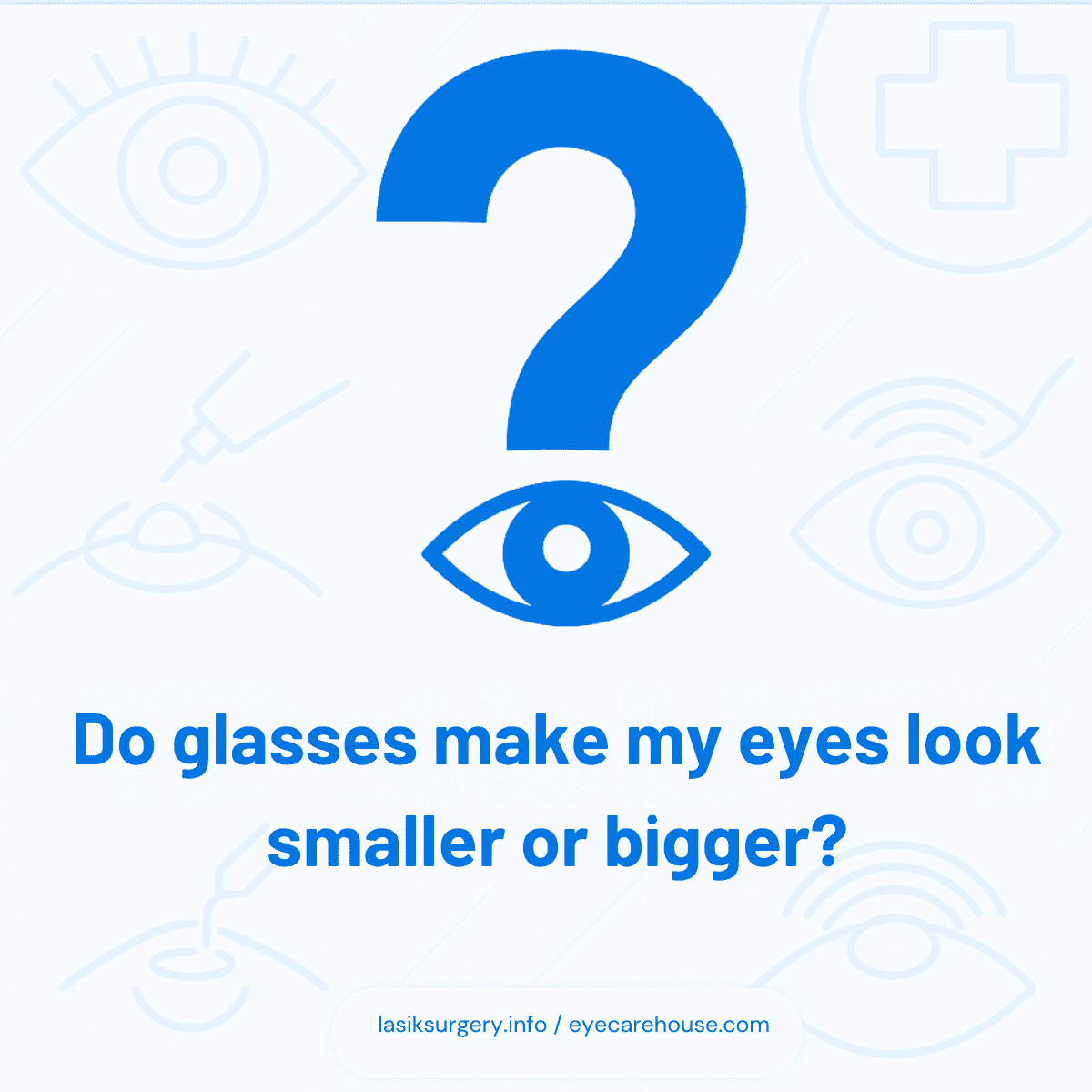
LASIK can improve eye balance by correcting differences in prescription between eyes, which may enhance perceived facial symmetry.
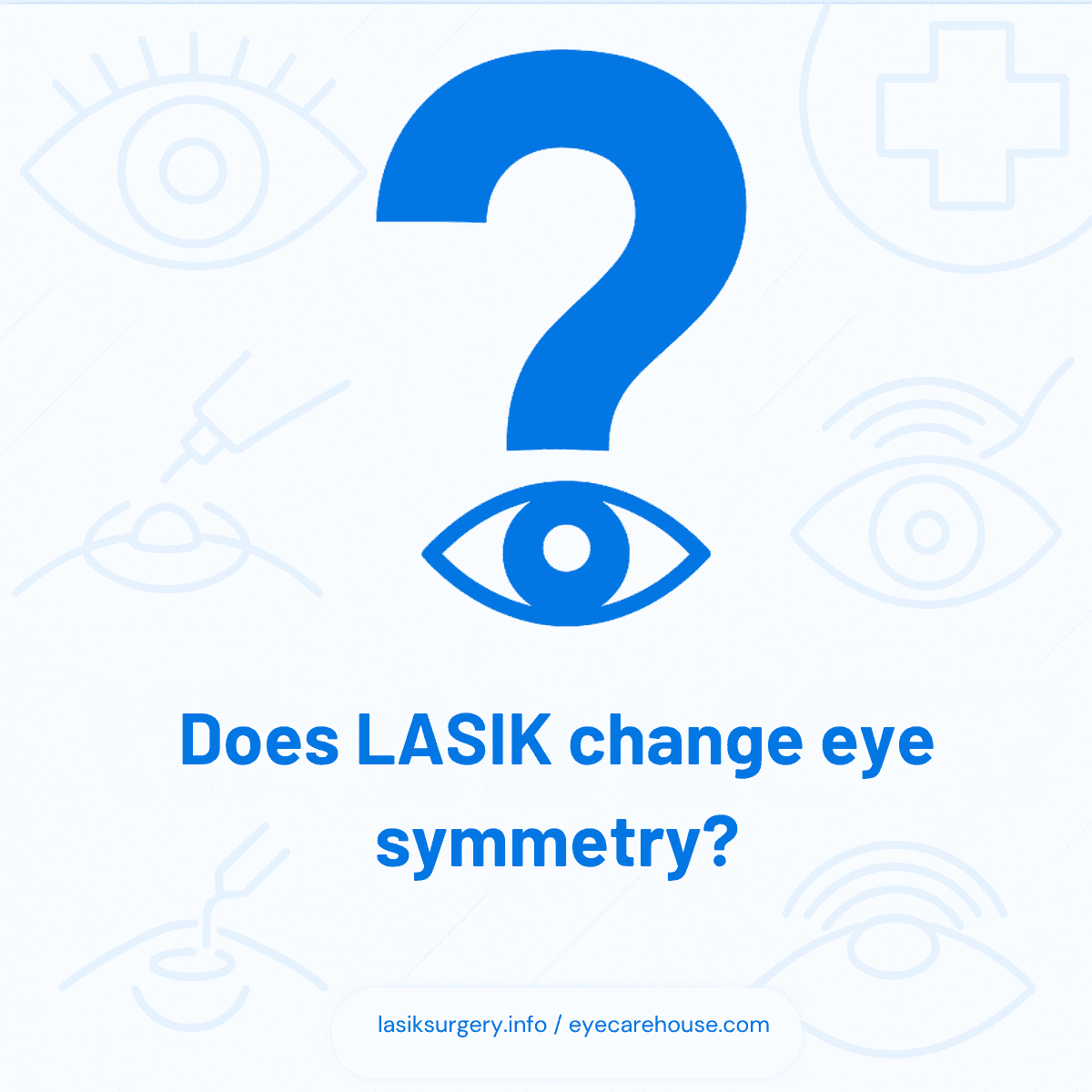
Freedom from glasses or contacts and clear vision often boost self-esteem, making individuals feel more confident in social interactions.
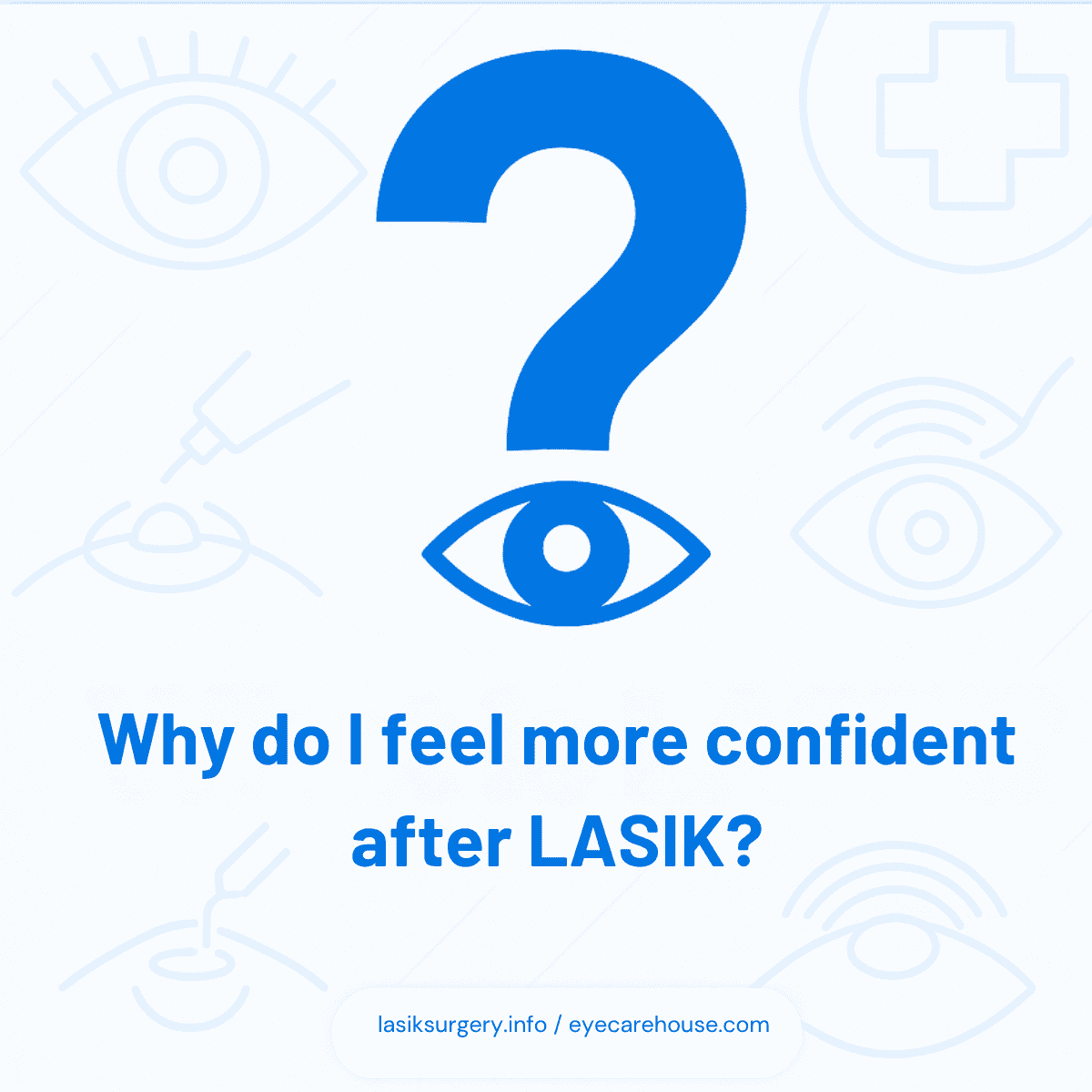
The effect is not physical and may fade as people become accustomed to your new appearance without glasses.
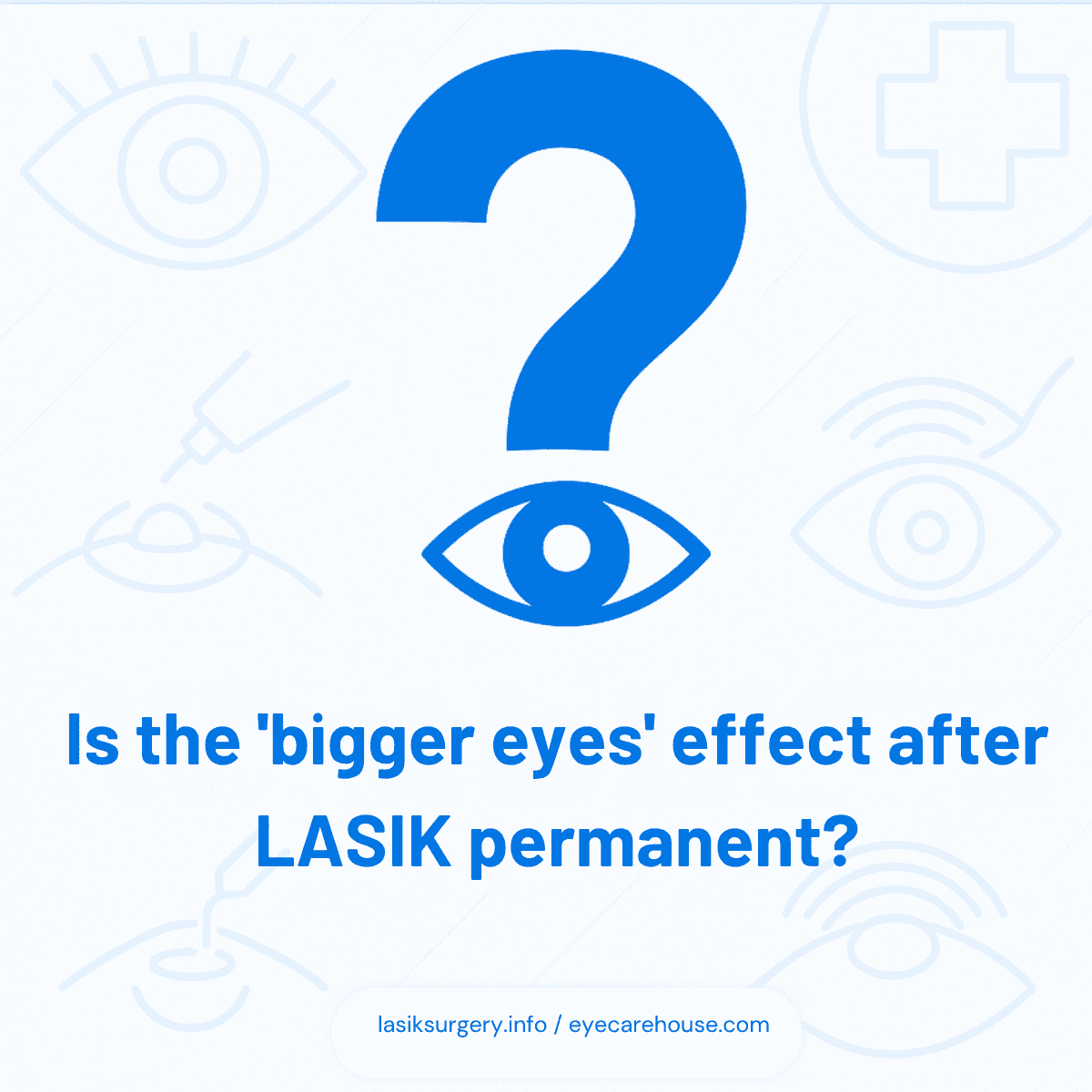
Yes, removing glasses can change how your facial features are perceived, often appearing more natural or balanced.
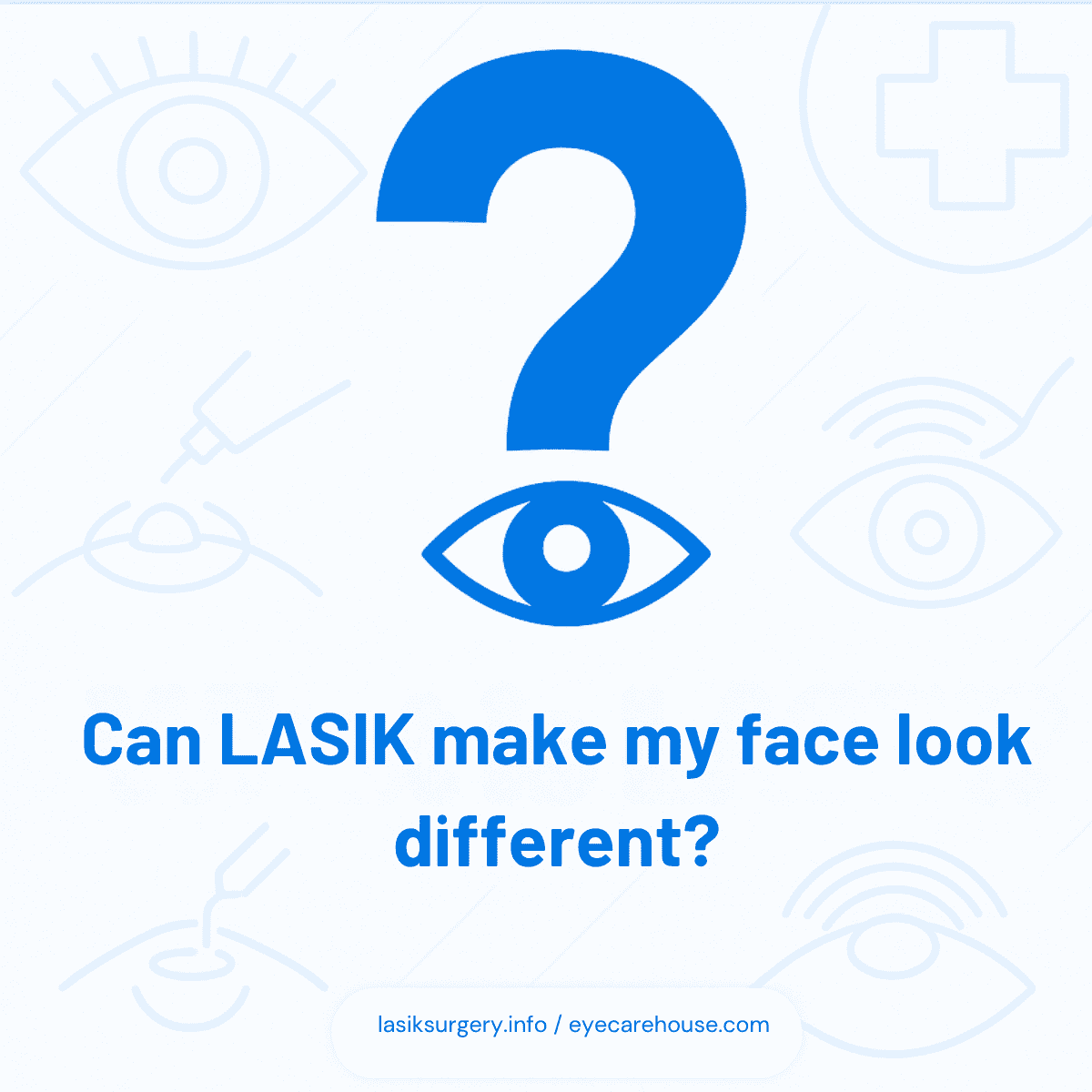
No, LASIK does not alter the eyelids or external shape of the eye. It only changes the inner corneal curvature.
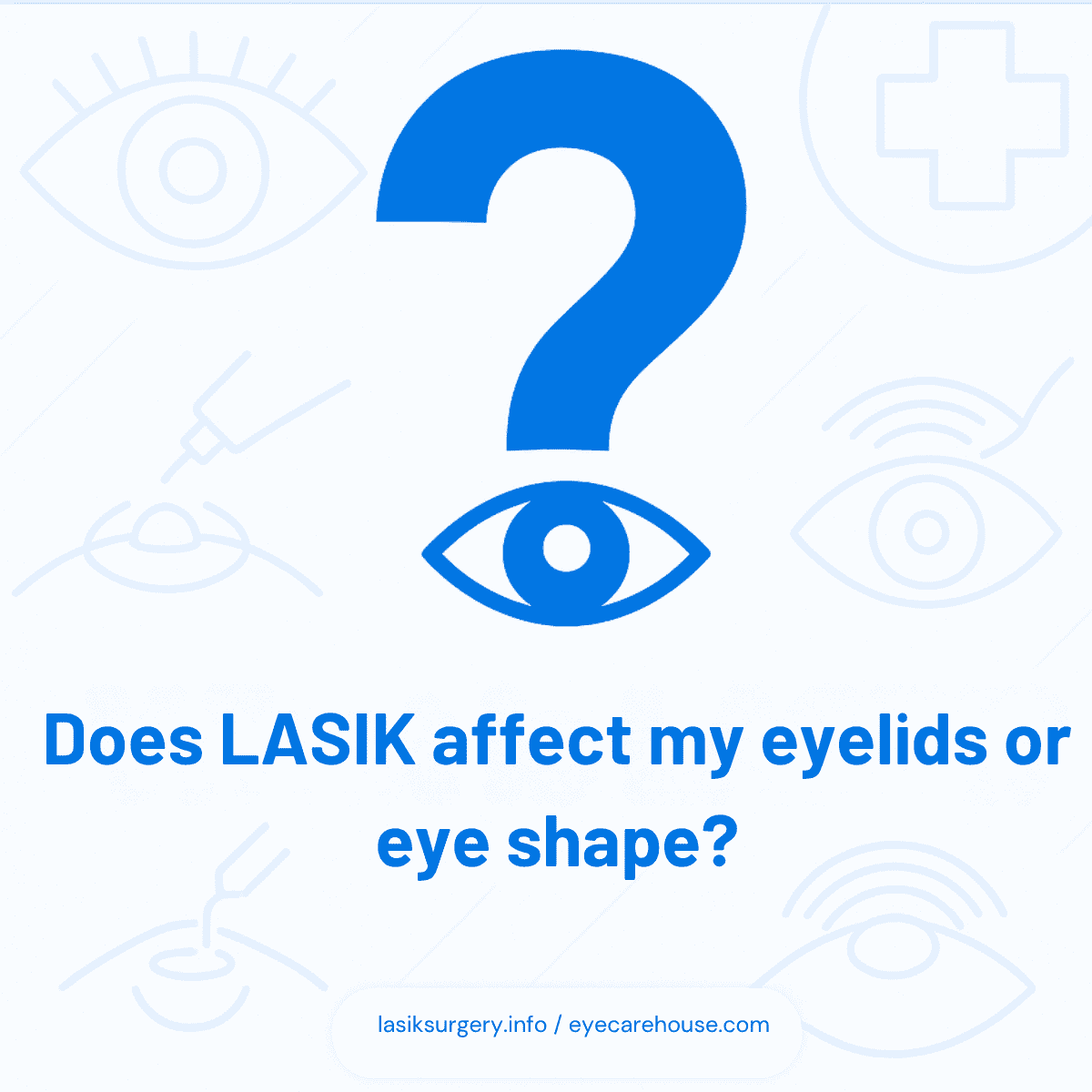
The combination of no glasses, improved eye visibility, and more direct eye contact creates a visual illusion of larger eyes.
